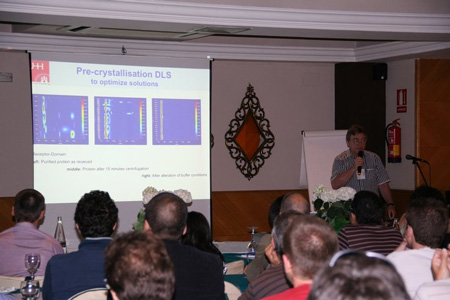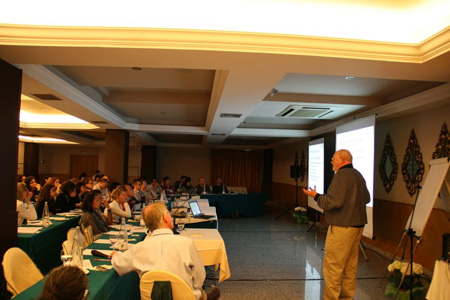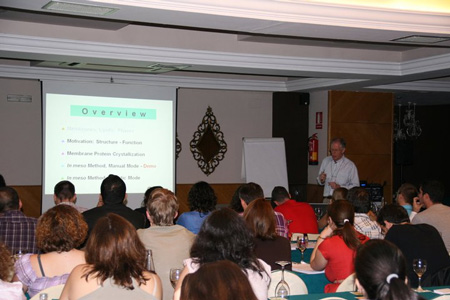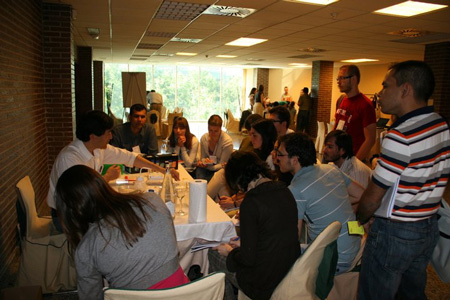The Laboratory of Crystallographic Studies (CSIC-UGR) organised the 3rd International School on Biological Crystallization under the auspices of the International Union of Crystallography through the Commission of Crystal Growth. The event took place in the Centre of the beautiful City of Granada, an ideal place to promote close scientific and social interactions between the attendees.
ISBC covered five days of lectures and practical demonstrations carried by 27 selected experts in the fields of crystallisation of biological macromolecules and biomineralisation.
The first day, Sunday, served as an introduction to the School and also provided the first lectures on the purification and preparation of protein solutions.

The second day, Monday, focused on explaining the fundamentals of crystallisation from solution to protein crystals; covering a wide range of topics from the physicochemical properties of solutions, through nucleation and light scattering techniques to finish with crystal growth methods and handling of protein crystals.

Tuesday was devoted to special hot topics that included talks on the crystallisation of large crystals, complexes and membrane proteins.

The fourth day of the School was dedicated to a ‘Demonstration Fair’, at which 22 specialists offered short (20-40 minutes) practical sessions periodically at scheduled times. Participants were able to choose what sessions they wanted to attend and in the order they wished, so that they selected their own learning programme “a la carte”. The Demonstrations’ Fair proved to be an excellent teaching tool as it provided students with plenty of opportunities to interact on a personal basis with the teachers and to watch closely how to perform crystallisation experiments.

Finally, the last day of the School focused on the subjects of biomineralisation and biomimetic materials.

Main topics of the ISBC 2011
- Nucleation: Classical and non-classical approaches.
- Crystal growth kinetics and mechanisms.
- Properties of macromolecular solutions relevant to crystallization.
- Screening: The search for crystallization conditions.
- Crystallization techniques: Batch, Vapour Diffusion and Counter-Diffusion techniques. How do they work?
- Crystallization and diffusion transport: gels, microfluidics and microgravity.
- Polymorphism in protein crystals.
- Robotics and crystallization.
- Case studies in Membrane Protein Crystallization.
- Lipid cubic phase, bicelles and detergent.
- Case studies in crystallization of Large Macromolecular Complexes.
- In vitro and in vivo studies of Biomineralisation processes.
- Case studies of important biomaterials and Biomineralisation processes.
Attendance
The turnout of the School was excellent with 96 participants from 19 different countries, most of which were students (65 students, 67,7 %) and academics (21 academics, 21,9 %), being the rest composed of industrial representatives and exhibitors. The participants were supported by 27 speakers and a team of 7 people from the organisation, totalling 132 attendees.

The turnout of the School was excellent with 96 participants from 19 different countries, most of which were students (65 students, 67,7 %) and academics (21 academics, 21,9 %), being the rest composed of industrial representatives and exhibitors . The participants were supported by 27 speakers and a team of 7 people from the organisation, totalling 132 attendees.
